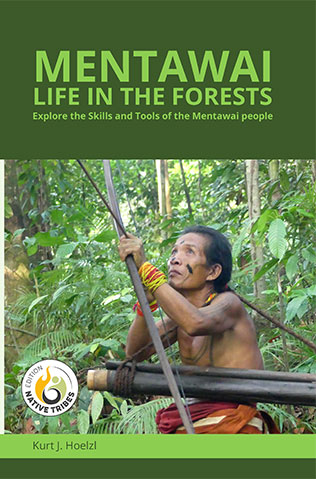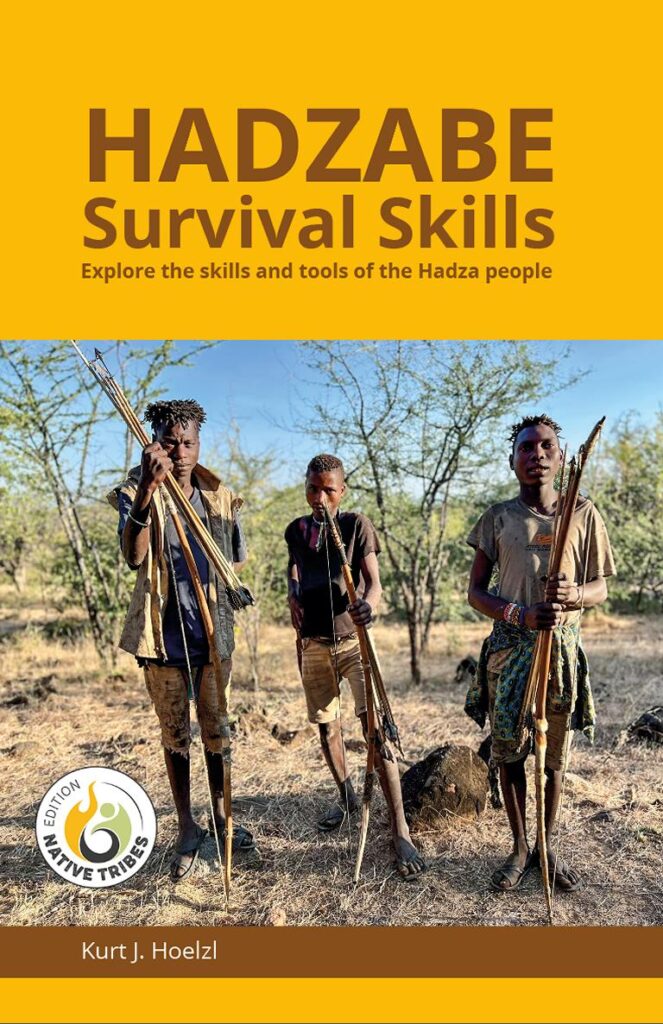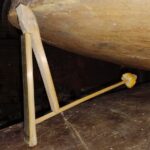Hadza people in remote areas of Tanzania are one of the last remaining hunter-gatherer tribes in Africa. However, only about 25% of Hadza people live this original hunter-gatherer life. That means, from a total population of about 1300 Hadzabe in 2024, around 300-350 still live their traditional lives. All others either serve in the tourist industry or spend their lives in villages on the lowest rung of the social ladder.
On the other hand, we were only together with real, remotely living Eastern Hadzabe in Yaeda South. All articles on this website concerning Hadza people are based on the skills and experiences of these original hunter-gatherers.
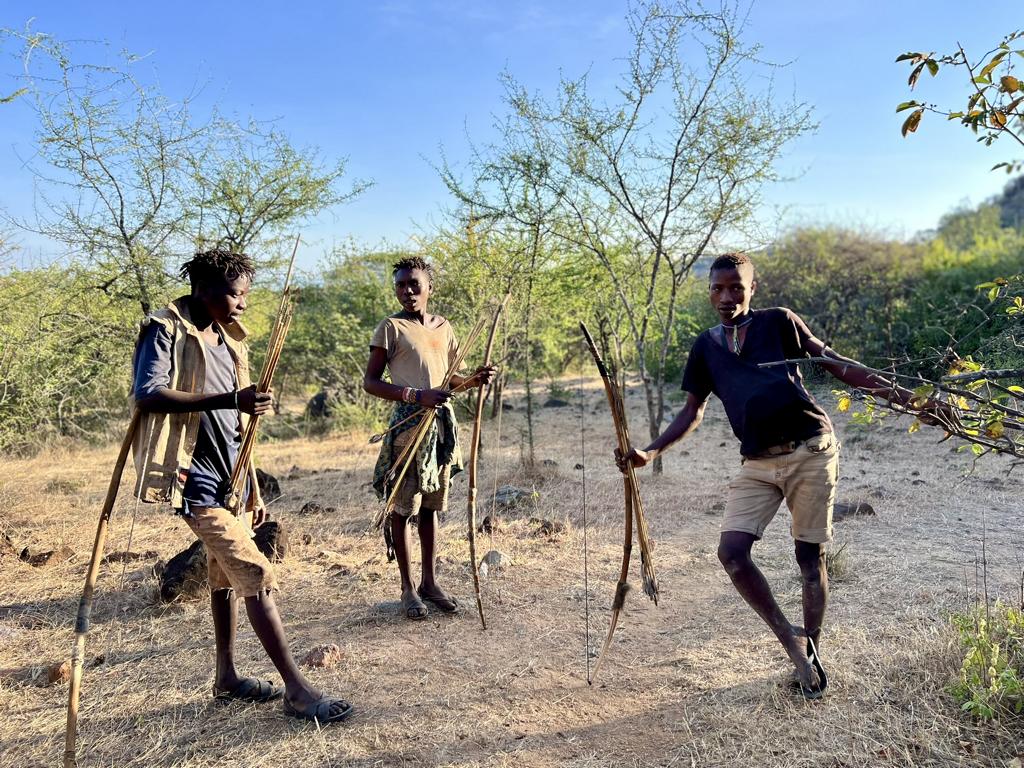
Which types of food are Hadza people eating?
Depending on the year’s season, Hadza people eat various portions of their main food types: honey, meat, baobab seeds and seed pulp, berries, and tubers.

The rough percentages are shown in the graph. Hunting is easiest in the late dry season when the animals must come to water holes and remaining springs. It is most difficult in the early wet season, when water is suddenly available in many pools and crevices, and the game will avoid these dangerous concentration points.
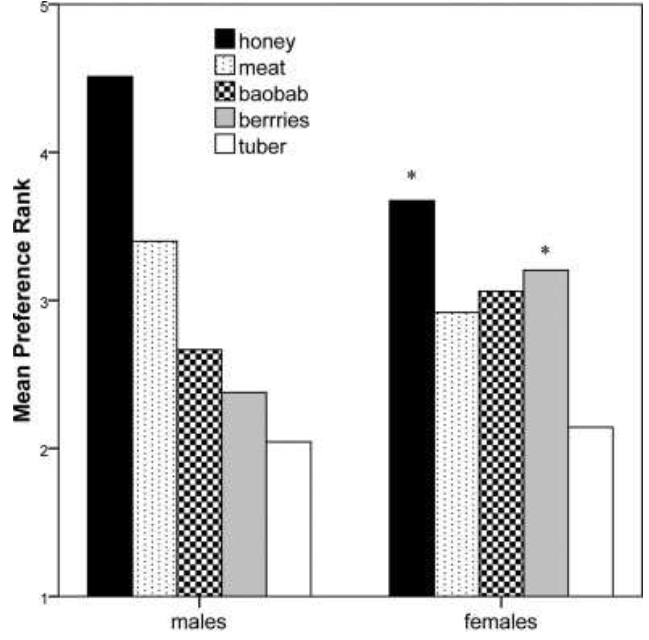
Independently of the season, Hadza men prefer to eat honey and meat and less on Baobab seeds and berries. Women, conversely, are not so hooked on meat.
Which weapons do Hadza people use for hunting?
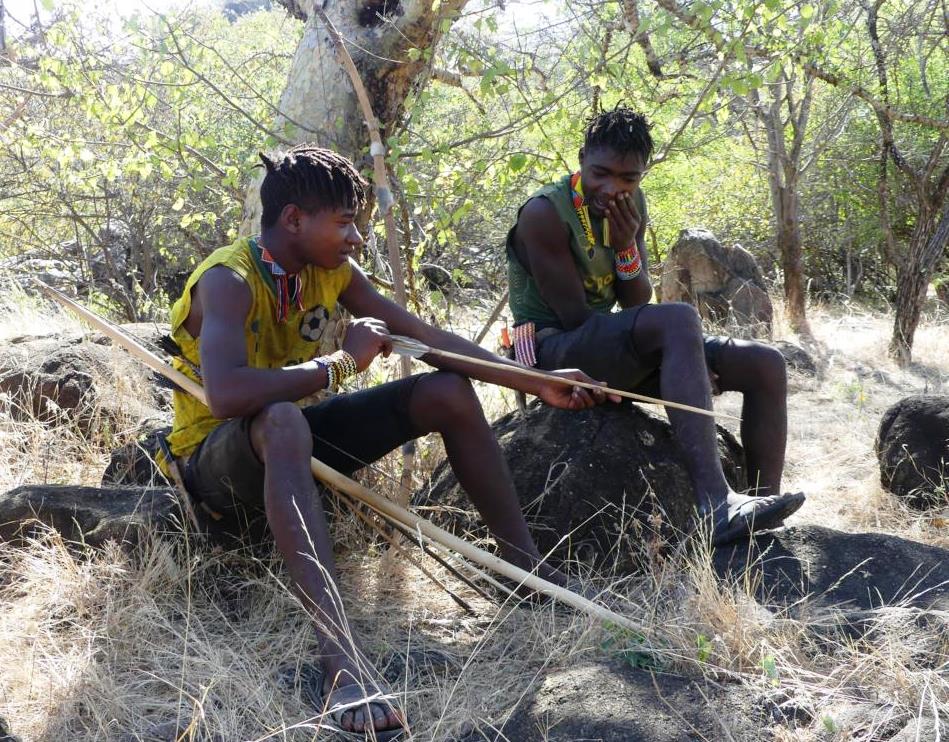
Hunting is primarily done with self-made bows and arrows. No snares are used, nor are any traps. There is a scientific study of why the Hadza people use no snares or traps. Although catching dik-diks or guinea fowl with such contraptions was relatively successful, leopards ate or stole all caught animals in the snares and traps. That means, due to the high leopard population in this rocky landscape, it would be necessary to control all catching devices tightly. Which is uncomfortable and unnecessary due to often successful bow-and-arrow hunting.
Which animals do Hadza people hunt and eat?
Hadza people hunt birds and mammals. They do not eat arthropods and amphibians. In gastropods, only Giant African land snails (Lissachatina fulica) are eaten by older men. In reptiles, only women and children eat leopard turtles.
They hunt and eat all species of birds: passerines (songbirds), near-passerines (e.g., barbets), and non-passerines (e.g., guinea fowls, spurfowl, …). The hunters typically eat smaller birds directly in the field. Korhaans, Kori bustards, and cuts of ostriches will be brought to the camp.
Mammals can be divided into two groups, which will be hunted. The first group consists of smaller animals often brought back to the camp. These include mice species, squirrels, mongooses, bushbabies, hyraxes, porcupines, vervet monkeys, olive baboons, Kirby’s dik-diks, aardvarks, warthogs, bushpigs, and other animals up to the size of an impala (about 45 kg / 100lbs).
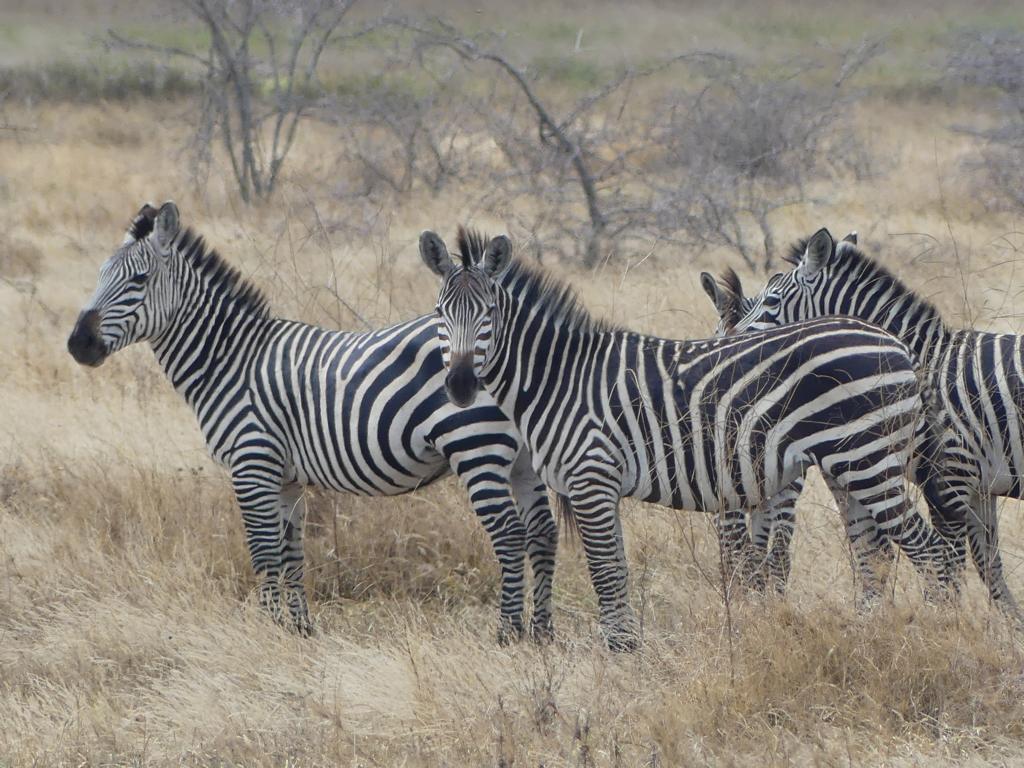
The second group includes medium—to large-sized animals, such as wildebeests, zebras, kudus, elands, and giraffes. The meat will be brought there if it can be carried to the camp. If not, the Hadza camp will be moved to the place of butchering. During our stay with the Hadzabe, they shot a Lesser Kudu (Tragelaphus imberbis) and a Grant’s Zebra (Equus quagga boehmii). The hunters brought meat to the camp, and the rest was cut into stripes and air-dried. It was just like making bush-biltong in Southern Africa.
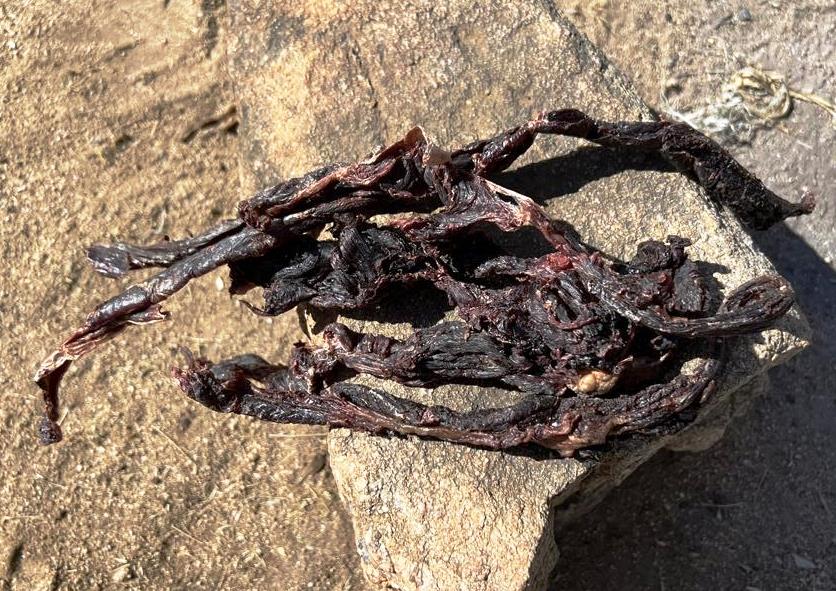
Hunting techniques of the Hadza people
Stalking

Either a single or a pair of hunters leave camp in the early morning. If stalking in pairs, they split up at the hunting area. Each one hunts opportunistically and alone after that. When it gets too warm—around 10:30—pairs meet again and return to the camp together.
To contact each other, each hunter whistles in his unique way.

When stalking, the hunter shoots at every bird, checks out every tree hole for bees, crawls underneath boulders to see any hyrax (Rock Dassie), and is generally highly alert for every sign and sound of all animals around.

Stalking is quite successful for birds and small animals. It also updates the hunter’s knowledge of the biome and its changes.
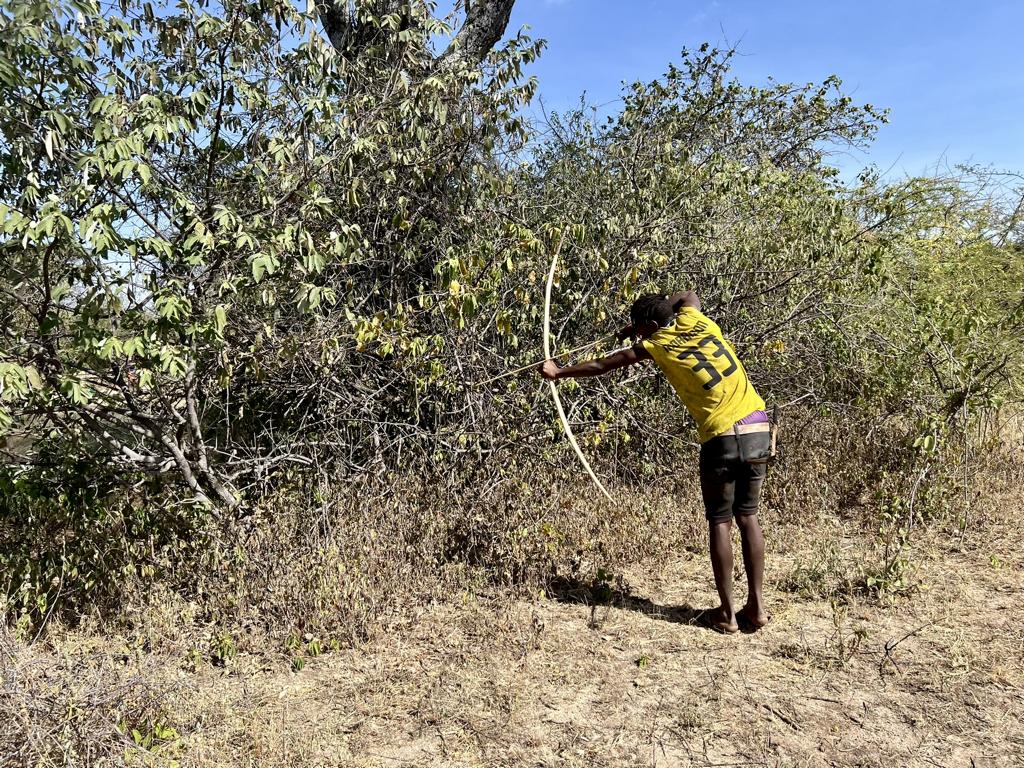
Birds, squirrels, and rock hyraxes are shot frequently, but dik-diks are too alert for the Hadza hunting them by stalking. Ambush-hunting dik-diks, however, will bag them more easily.
Stalking is the most typical Hadza hunting method for younger men. It is physically demanding, requires strict stealthyness, and exposes the hunter to unpleasantries like thorny shrubs and rocky terrain. Stalking delivers about 75% of all wet and early dry season carcasses.
Ambush hunting
That is the Hadza hunting technique for men in their prime. It does not involve much moving around, and the chances of shooting a large animal are higher. During the late dry season, about 60% of all hunted carcasses will be acquired by ambush hunting.
Depending on the season, the hunter will set up his blind where animals concentrate. This can be a watering place in the dry season or a cluster of berry bushes at the end of the wet season. Baobab trees are attractive, as they can flower for up to five months. A concentration of young Acacia seedpods would also be such a focal point. And a concentration of anthills will attract aardvarks, for example. The Hadza people call such blinds at these concentration points ‘Salameda.’

Due to hunting pressure, many animals are feeding or drinking at night. Therefore, the best chances for ambushing them are on moonlit nights, when the hunter can stay in the shadows but sees the target animals. Hadza people normally hunt from these blinds in pairs so that one can sleep and the other can watch possible prey and look out for danger.
Ambushing night roosts of baboons
Olive Baboons (Papio anubis) are the Hadza people’s favorite meat. No other meat can compare in deliciousness to them. Warthog and aardvark meat are second and third.
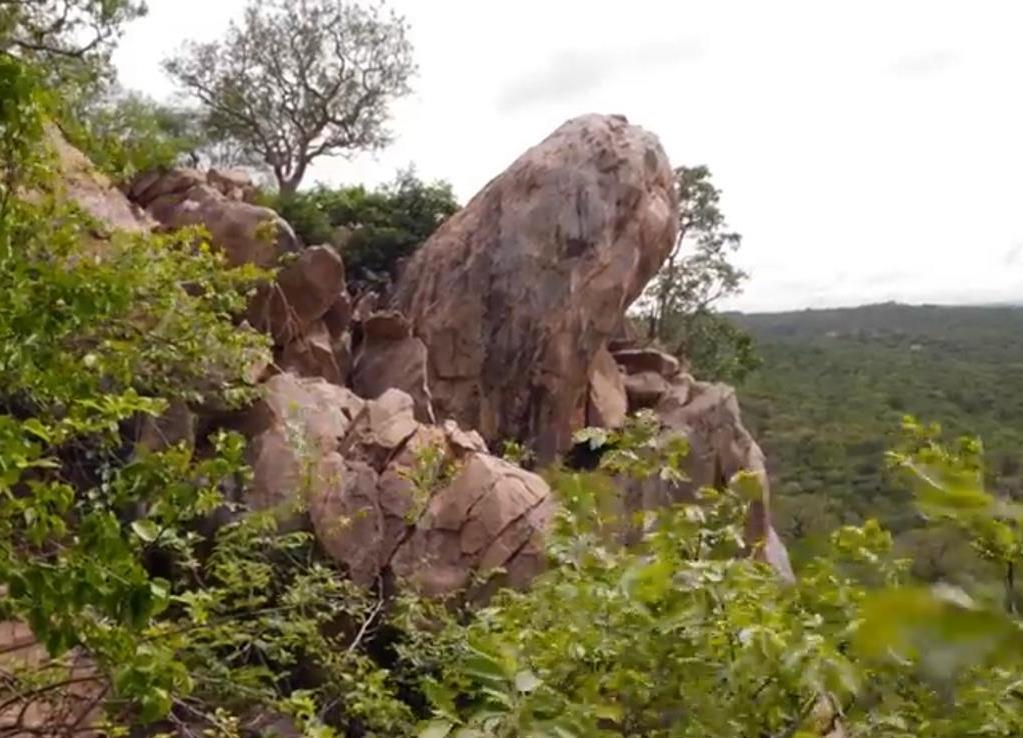

However, a special hunting technique is necessary to catch them. Although Hadza people normally prefer to hunt solo or in pairs, many hunters are necessary for a baboon hunt. Finding a night roosting place for a troop of baboons is relatively easy. They will always choose a place with a good overview of approaching paths, either koppies (rocky hills) or big trees. Every evening at dusk, the whole troop will move towards this place. A keen observer can, therefore, track them back over some days until finding the roosting place. This place will be littered with baboon feces, which are very characteristic and easy to spot and smell.
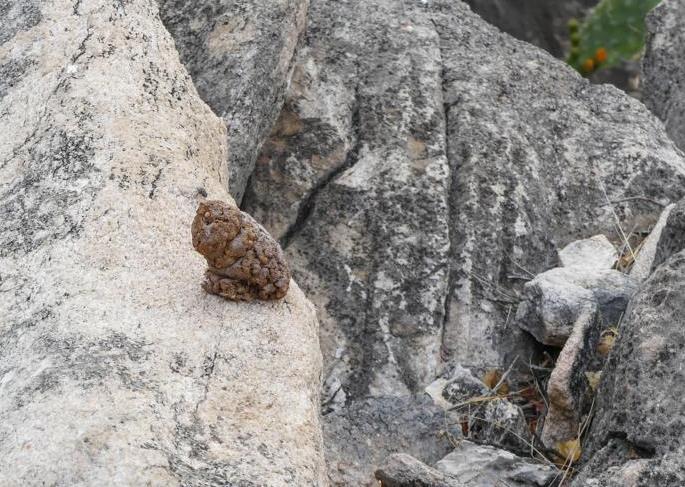
How the hunt develops
The baboons will sleep during the night, and no guard will be awake. Therefore, a handful of times during the year, Hadza will start a cooperative nighttime hunt for baboons in their night roosts. Such a hunt can’t be done too often; otherwise, the baboons will leave this area. On the other hand, a Hadza man is only considered fit to start his own family if he has killed at least five baboons.
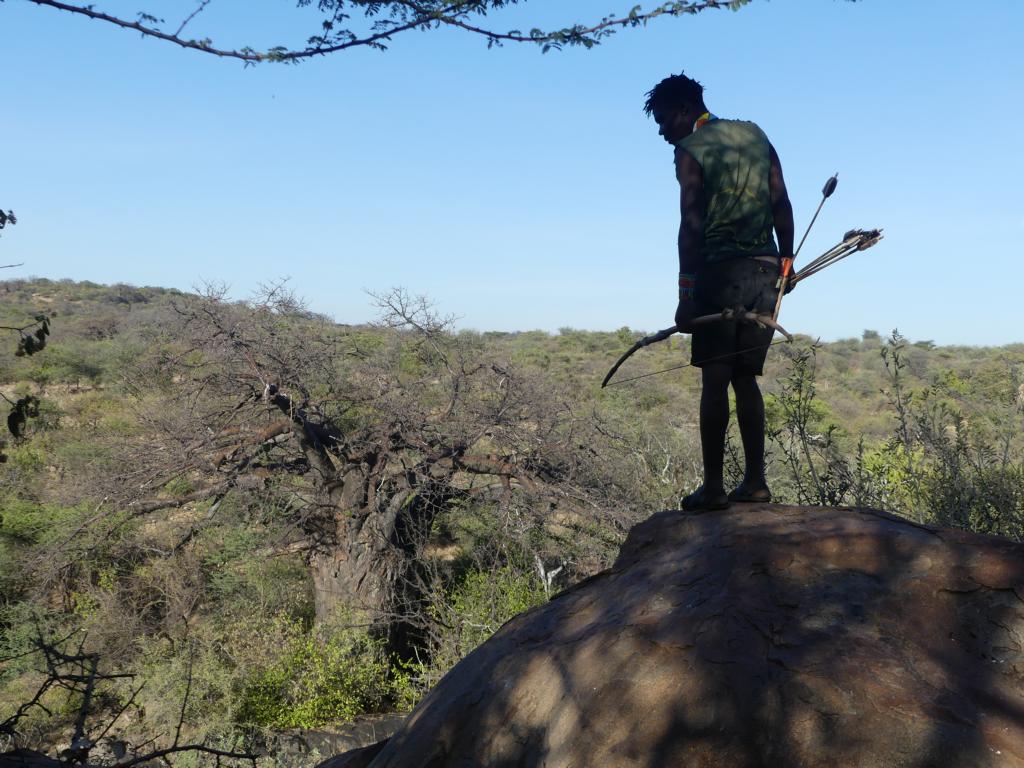
At the hunt itself, the Hadza hunting party will surround the roosting place in full darkness but towards the morning. This is difficult, as boulders often have to be tackled, and thorny shrubs are plenty everywhere. The circle of the ascending hunters will get closer. Finally, the baboons will be startled by some noise from the approaching hunters. After warning screams, they will run down towards the safety of the surrounding bush at the bottom of the hill. That way, they must pass the approaching Hadza hunters, who will try to shoot them with their bows and arrows.
Digging out porcupines
Crested Porcupines (Hystrix cristata) are nocturnal. They move around at night for food and return to their burrows during the day. These porcupines gnaw their favorite roots, bulbs, and leaves and also need bones to ingest calcium and sharpen their teeth.
Porcupine lairs are often located in tunnel systems under rocks or termite mounds. A Hadza hunter with a headlamp will creep into these tunnels and try to find the inhabitants. These are usually a porcupine couple or a whole family group. After determining the direction and depth of the nesting chamber, the hunters dig down from above to expose the inhabitants. The porcupines in the tunnels will be cornered and speared or clubbed to death.



This type of hunting is quite risky because, at the initial inspection of the tunnel system, a variety of unpleasant other inhabitants could be encountered. Black Mambas are one of them. These tunnels are also festered with ticks and fleas.
Shooting Guineafowl
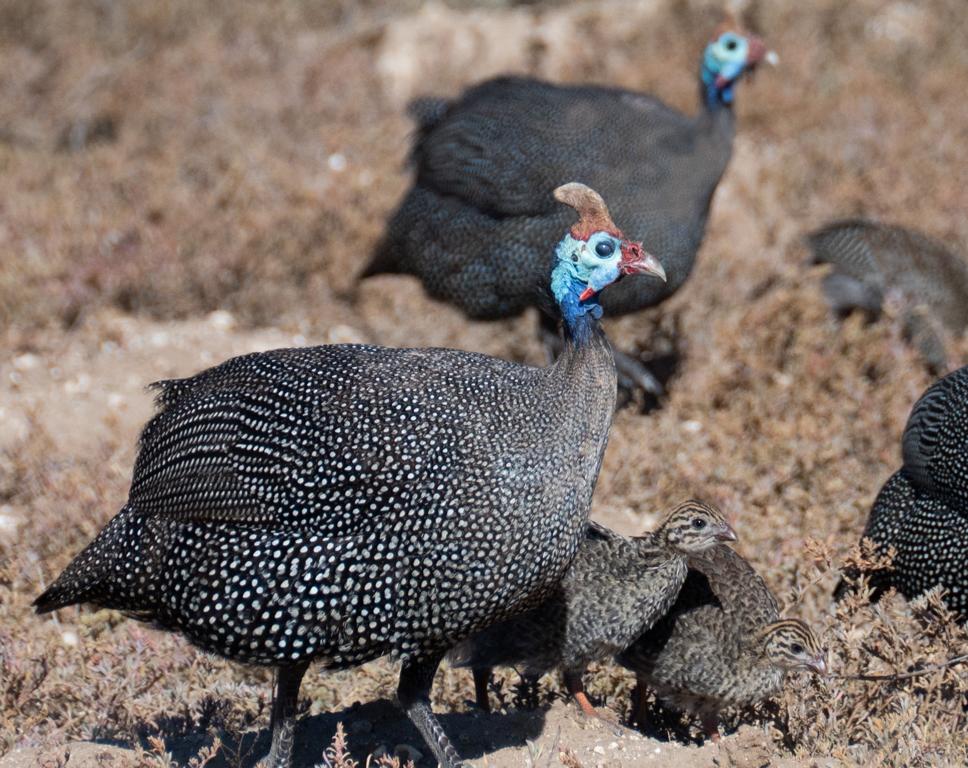
The Helmeted Guineafowl (Numida meleagris) species is mainly present in the Hadza area. Guineafowl lay and hatch eggs from February to April while nesting in trees. On moonlit nights, Hadzabe people steal up on their nests and shoot the birds with arrows.
Hunting with dogs
Remotely living Hadza people do not use dogs for hunting. These would be far too noisy for stalking or ambush hunting. However, dogs are a favorite hunting method for Hadza people serving the tourist entertainment circus. Many YouTube videos show big packs of hunting dogs running with a group of Hadza hunters.

This makes a good show, but dogs can only be used for flushing the game (e.g., bushpigs) or rushing it to death, which was never a traditional Hadza hunting method. Therefore, I do not want to elaborate further on this method.
Scavenging
Hadza people also obtain meat by scavenging medium—to large-sized animals that large predators kill. They carefully observe vultures circling in the sky and try to determine the spot where the freshly killed animals are located. When they find the location of the kill, they try to run off the lion(s) or leopard. They are also keen on hearing distress calls from prey and will react immediately to find the carcasses of other predators and birds of prey. Scavenging yields about 15% – 25% of all acquired carcasses during all seasons.
Lessons learned from Hadza hunting techniques:
- The primary hunting weapons of Hadzabe are bows and arrows.
- Hadzabe people are neither setting snares nor traps.
- The most important hunting technique for remotely living Hadza people is ambush hunting.
- Stalking is done mainly by the younger generation solo or in pairs.
- When groups of hunters dressed in baboon furs with dog packs are seen on YouTube or other social media, it is a typical sign of staged hunting for tourists.
Some personal words
There is a flourishing tourist industry in Tanzania, which uses the Hadza people as a tourist magnet in addition to the Serengeti, Ngorongoro, and Kilimanjaro. Tourists are ferried into fake Hadza camps, where they can see the skills of ‘stoneage-like’ people. Hadzabe are depicted as aggressive hunters, constantly clicking and chattering into thin air.
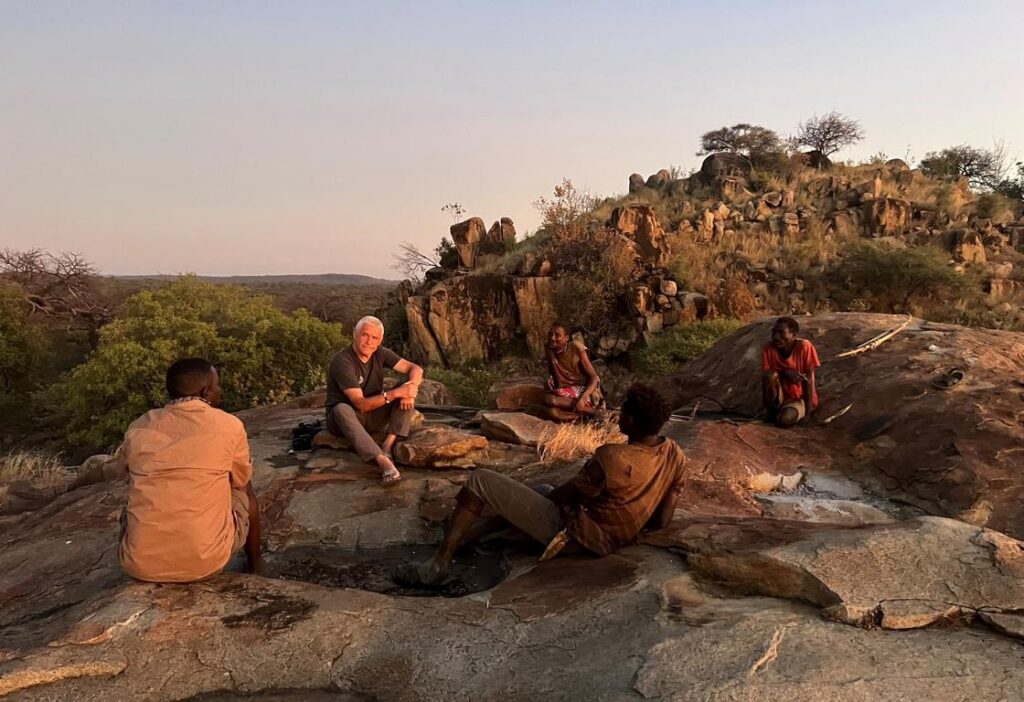
The opposite is correct. Real, remotely living Hadzabe are warm, friendly, and quiet people. They hate noise, share everything, and are as interested in our lives as we are in theirs. I will never forget the evenings in the setting sun with them.
Additional information
My book ‘Hadzabe Survival Skills‘ offers more skills, knowledge, tools, and techniques for the Hadzabe people’s life in their natural environment. It is available on Amazon.com and Amazon’s regional websites.
.

